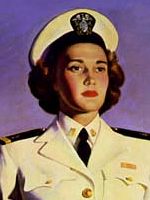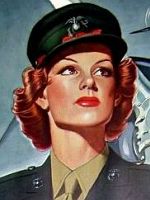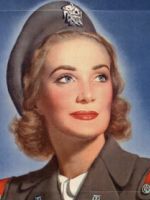The Black & White "Fallacy":
.
|
(Picture
Courtesy of Shelby L. Stanton)
|
. |
(Picture
Courtesy of Shelby L. Stanton)
|
.
You think these WAC service
women have used discreet lipstick?
Check out by clicking
the b/w images !
.
Facts: WWII Service Women
and Cosmetics
While modern military regulations frown upon
bright cosmetics and other symbols of adult lady behavior during World
War II, such as smoking cigarettes, these were accepted as womanly attributes
during the 1940s. There was no equality of the sexes mandated or even desired.
Women were always viewed as women foremost, and thus entitled to look and
act both feminine and attractive by the standards of the time (with only
excesses disapproved).
.
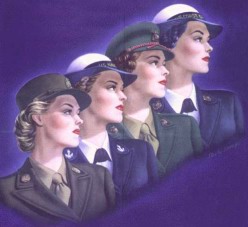 |
.... |
Feminine appearance of service women was even
encouraged to counteract the popular sentiment that women in the military
would loose their femininity. These concerns were a major problem for recruiting
efforts, and unwritten policies favored nice figures and facial good-looks
for enlistment, promotion and officer potential.
Furthermore, much contemporary literature from
the World War II period attests that the attractiveness of female volunteers
was an important morale consideration aimed to boost the soldiers' spirits. |
.
.
| Cosmetics were an important factor because
nearly all other feminine attributes like fashionable dresses, high heels,
loose wavy hair, jewelry, etc., had to be suppressed in favor of functionality.
The use of cosmetics in the 1940's was intended
to highlight "natural beauty". While eye-shadow and rouge was applied discreetly
to give a fresh and rosy look, lipsticks were used in striking red colors. |
.... |
 (Some cosmetic companies
tried to attract especially service women with their advertisements)
(Some cosmetic companies
tried to attract especially service women with their advertisements)
|
.
.
 |
..... |
Furthermore, liberal application of lipstick
was encouraged for women by medical authorities (including the military)
during an era when smoking was part of sophisticated adulthood.
Lipstick was thought sufficient to guard delicate
female lips against smoke vapors. Just as popularly, it gave a sexy
polish to the cigarettes themselves -- both to flirt and to allow socially
permitted public exchanges between couples sharing cigarettes, even without
direct kissing.
Service life, as part of adult culture, mandated
this make up style as it gave social conformity to cosmetic trends (especially
for rural girls not used to big-city ways) and introduced nonsmoking women
to cigarettes. |
.
.
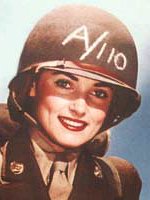 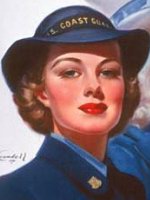 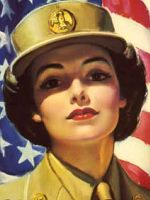 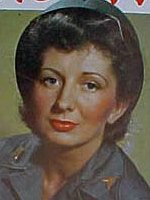 ..
..
Therefore, it is important not to mistake
current army standards for previous military allowances or be misled by
WWII regulation orders of "inconspicuous make up" which were actually often
disregarded. This attitude is also confirmed in the statements regarding
Army Nurses and their use of make-up in
War Department
News Release S-1039 (December 1942)
|
The U. S. Army nurse is a familiar figure now wherever
American troops appear. Trim and competent, she steps down the gangplank at
ports all over the world - the typical American girl whose life might have
followed a more conventional pattern had the war not swept her into professional
service far from home. She is literate, personable, well-groomed, healthy,
disciplined, and scientifically trained for her immediate task.
(...)
They are permitted considerable latitude in the way they
do their hair and use make-up, provided they avoid extremes. Their hair
must be short and look neat under forage caps. Dangling ends are frowned
on by nursing superintendents. Their manual does not mention rouge, lipstick or
nail polish, but the superintendents do. Rouge must be subtly applied.
Nail polish must be colorless or the palest pink, if used at all. This is one of
the first lessons that the young nurses learn; and one that they violate most
often.
Lipstick in moderation is
approved. In fact, their bon voyage gift from the Red Cross when they sail for
foreign service includes lipstick, notepaper, shoelaces, sewing kit, a manicure
set, a bar of chocolate, a book and various toilet articles. Mascara, eye
shadow, exotic effects are all taboo as unsuited to their uniform, their
professional duties and the tradition of the nursing service.
|
.
.
If you want more detailed information about
1940's make up please take a look at my
"20-to-40-style
Make up Guide"
.
 .
. .
.
.
.

|




 .
.




